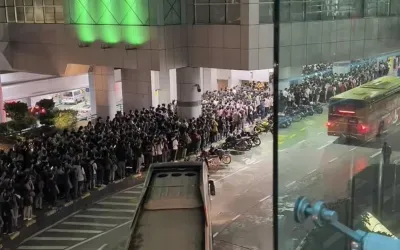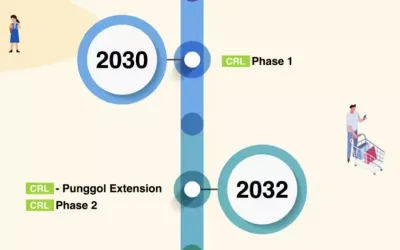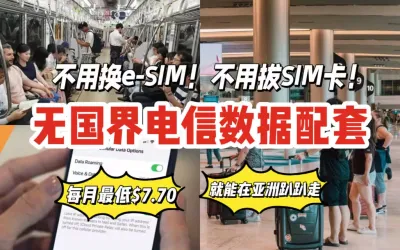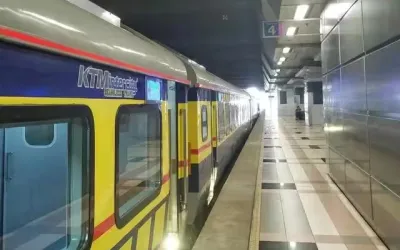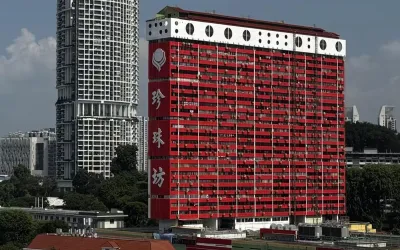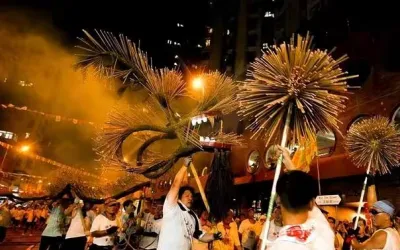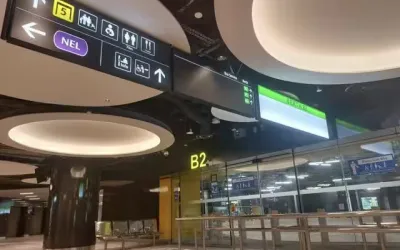在疫情初期,新加坡因能夠有效控制感染人數一度被世界衛生組織稱讚為「防疫典範」。在二月份時,新加坡曾成功將每日新增的感染人數控制在個位數。世衛總幹事譚德塞甚至評價新加坡的檢測達到」無漏網之魚「的水平。然而自2020年3月底開始,隨著疫情開始大規模爆發,新加坡抗疫的盲點浮出水面:被邊緣化的三十萬客工(外來勞工)。
In the early days of the COVID-19 crisis, Singapore was held up as a role model for its battle against the coronavirus. In the words of WHO Director-General Tedros Adhanom Ghebreyesus, Singapore’s public health response was 「leaving no stone unturned」. By April, however, Singapore’s blind spot became startlingly clear. For all its strengths, Singapore’s government had neglected a community vital, yet peripheral, to Singaporean society - its over 300,000 migrant workers.
新加坡在4月底成為東南亞確診個案最多的國家。這第二波的爆發主要來源於在擁擠的客工宿舍形成的感染區。(詳見新加坡單日新增首次破百;新增198,累計突破2000 | 客工群體面臨爆發危險)
許多新聞社論評價稱新加坡在疫情初期對客工這一群體的忽視是這次群體性爆發的主要原因。(例如:因忽視抗疫盲點 新加坡付出高昂代價)
路透網的數據顯示,截至5月17日,客工宿舍的確診人數達到25,525人,占總確診人數的90%。
Singapore was soon struggling to contain an infection spread centred around foreign worker dormitories. After reporting single-digit numbers daily in February, by April Singapore had the highest number of reported COVID-19 infections in Southeast Asia. By May 17, Reuters reported that the number of confirmed cases in foreign worker dormitories had reached 25,535 - 90% of the total.

圖表來自路透社
為了控制客工宿舍感染的擴大,新加坡政府於四月初成立專門工作小組,旨在加強客工宿舍的防疫措施。採取的措施包括大批量的檢測(每天3千人),將感染區隔離,以及疏散健康的客工、為他們安排一些更加寬敞的居住場所。然而在這樣的措施之下,客工群體的新增確診人數仍居高不下。截至7月18日,客工宿舍的確診人數達到44,719,占總確診人數的94%。(詳見累計47655|部長提示謹防疫情反撲)
不過檢測的普及度也是這個數字背後的原因之一。7月14日,新加坡衛生部稱已完成21萬人次的客工宿舍人員檢測,占客工宿舍人員總數的三分之二。並預計於8月中旬完成全部客工宿舍人員的檢測。
In early April, Singapore’s government formed an inter-agency task force to, in the words of Prime Minister Lee Hsien Loong, 「handle the situation in the dorms」. The task force set up medical facilities and triage clinics, provided food and WiFi for workers stuck in dormitories, isolated infected patients in specially designated facilities, and conducted large-scale testing of up to 3000 persons per day. The high testing rate is undoubtedly a factor, but case numbers in foreign worker dormitories continued to soar. As of 18 July 2020, Singapore has recorded 47,655 cases in a country of about 5.8 million, with 44,906 cases, or 94%, detected in foreign worker dormitories.

新加坡軍醫在客工宿舍建立的檢測點為一名客工進行檢測(圖片來自網絡)
Here, Army Medical Services personnel attend to a foreign worker at a medical facility set up within the dormitories.
背景聚焦
「客工」或「外籍勞工」這個群體因新加坡疫情的二次爆發而受到關注,只是這個關注來得有點晚。客工指的是哪些人?他們為什麼來新加坡?他們的生活是什麼樣的?這個星期,我們聚焦新加坡客工面臨的問題和挑戰。
Singapore’s wave of COVID-19 infections has finally drawn the country’s attention to the plight of its migrant labor population, catalysing much-needed reflection from Singapore’s government and its citizens. But who are Singapore’s migrant workers? Why are they needed? How do they live? This week, we spotlight these migrant workers and the myriad challenges they face.

圖片來自網絡
新加坡的客工是誰?
Who Are Singapore’s Migrant Workers?
新加坡客工一般指來自印度、孟加拉國或者中國的低收入工人,他們通過申請工作準證(work permit)來到新加坡,大多從事建築和保潔相關的「髒、累、險」工作,又被稱為「3D(dirty, dangerous or difficult)」工作。和頒發給所謂高端人才的工作簽證(work visa)不同,工作準證是專門為從事對技能要求較低的「低端」勞動力設置的,而且對持證者的限制更多:他們不可以帶家人一起來新加坡,只能通過企業申請工作準證,且在持證期間不能變更工作。因為不能更換工作,僱主若無理剝削,客工也無從伸冤。在這樣不平等的制度之下,客工這一群體在新加坡社會的邊緣化也不足為奇了。
In Singapore, the term 「migrant worker」 refers to low-wage laborers who hail largely from India, Bangladesh, and China. They hold Work Permits, a visa category that affords fewer privileges than the work visas given to highly skilled 「expatriates」. Work Permit holders are, for example, not allowed to bring family with them to Singapore or to switch jobs, which leaves them vulnerable to abuse and exploitation by their employers. Most of them work in construction or public sanitation, jobs that most Singaporeans characterize as 「3D」 (dirty, dangerous or difficult). Due to the structural inequalities built into this employment system, migrant workers tend to lead a marginalized existence in Singaporean society.

數據來源:新加坡政府於2019年12月公開的信息
新加坡為什麼需要客工?
Why Does Singapore Rely on Migrant Workers?
新加坡對客工的需求主要來自這兩個原因:人口問題和勞動力結構的變化。近20年內,新加坡生育率不斷減少,目前已降至1.16%,是全球生育率最低的國家之一。因此本地人口已不足以支撐新加坡經濟的發展。再加上本地人大多接受了良好的教育,對工作比較挑剔,擇業時往往會將「3D工作」排除在外。而幫助新加坡填補這些行業的勞動力缺口的正是客工。換句話說,新加坡向以知識密集型高科技產業和服務業為主導的「知識型經濟(knowledge-based economy)」的轉型,完全離不開客工。新加坡貿易和工業部2004年的一份研究指出,在1992-1997年新加坡經濟以年平均9.7%的增長率快速發展的時期,客工對經濟增長的貢獻高達29.3%。這個數據或許有些過時,但依然直觀地展示了客工對新加坡的貢獻。
Singapore’s demand for migrant workers is largely fueled by two key drivers: a shrinking domestic population and a local aversion to so-called 「3D」 jobs. Singapore’s fertility rate has been falling for the past 20 years, and at 1.16% registers as one of the lowest in the world. This has caused Singapore’s already-limited population to shrink, resulting in more job openings than the local population is able to fill alone. Singapore’s economy thus relies heavily on migrant labor, particularly for 「3D jobs」 that most Singaporeans would refuse to consider. But while jobs in the construction or public sanitation sectors are generally seen as undesirable by Singaporeans, they nevertheless constitute essential functions that support Singapore’s economy. For example, a 2004 survey by the Ministry of Trade and Industry found that between 1992 and 1994, migrant workers』 contribution to Singapore economic growth was almost 30%.
客工在新加坡的境遇如何?
How Are Migrant Workers Treated?
儘管新加坡3D問題的解決以及經濟發展都離不開客工,他們的貢獻並未得到社會的認可,客工群體與本地的社群之間仍然存在巨大的鴻溝。很多新加坡人還是有仇外心理,認為客工占用了本國人的經濟資源。對客工的不滿甚至在2011年成為政府選舉的主要政治議題,使得政府對客工設置了更多的限制。時至今日,新加坡人對客工仍然抱有敵意:儘管有70%的新加坡人意識到國內存在勞動力短缺的問題,只有四分之一的人認可客工對國內經濟發展的重要性。
Despite Singapore’s reliance on migrant workers, their relationship with the Singaporean community is tenuous, marred by racism and xenophobia. Discontent with the influx of low-wage migrant laborers was a key issue in the country’s 2011 general election, causing the government to tighten its immigration and foreign labor policies. Even today, Singaporeans are still not open to migrant labor: surveys show that just one in four Singaporeans says there is a need for migrant workers, even though seven in ten agree that there is a labor shortage.
由於無法融入當地社群,客工始終生活在社會的邊緣。2013年12月,新加坡發生了40年來首起客工騷亂事件。騷亂的起因是一名印度籍客工被一輛私人巴士撞倒身亡。這起事故引發了涉及300多名客工的騷亂,進一步激化本地社群對客工的偏見。
Migrant workers do not just face social ostracization - they also live on the physical periphery of the local community. Unfounded concerns about the safety of the elderly, the young, and property devaluation fueled a 「not in my backyard」 mentality that kept workers on the periphery of local residential estates.


